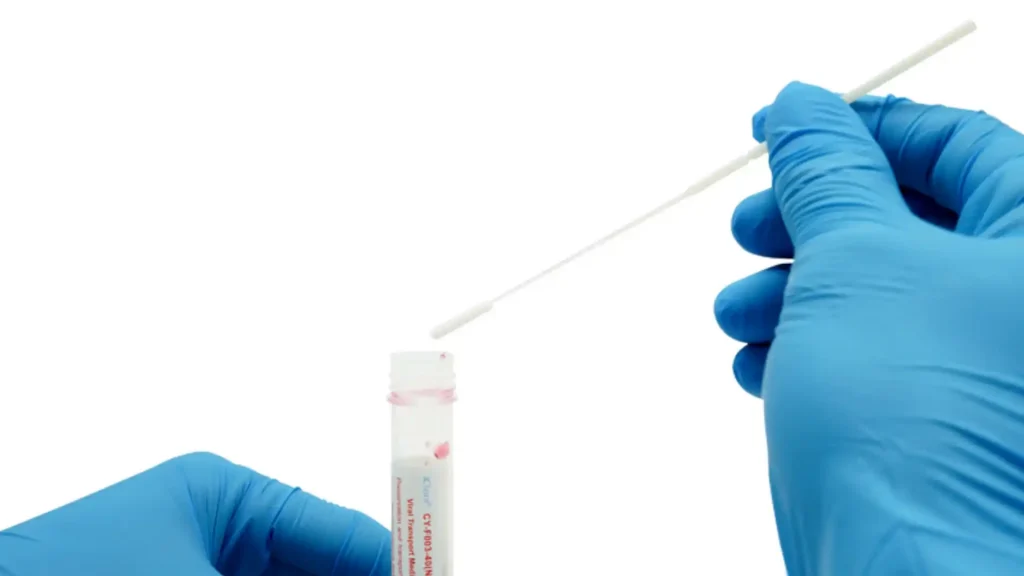Viral Transport Media (VTM): Inactivated vs. Non-Inactivated Tubes – A Comprehensive Comparison

Viral Transport Media (VTM)
The Difference Between Inactivated and Non-Inactivated Viral Sampling Tubes
This is a crucial and common question in diagnostics and virology. Disposable viral sampling tubes are primarily categorized into “Inactivated” and “Non-Inactivated” types. The core difference lies in the additives in the transport medium and their function, which directly determines the sample’s subsequent use.
Below is a detailed explanation of their differences across various dimensions:
I. Core Difference: The Presence of Lysis Buffer (Virus Inactivation Components)
| Feature | Inactivated Viral Sampling Tube | Non-Inactivated Viral Sampling Tube |
|---|---|---|
| Core Components | Contains lysis salts (e.g., Guanidine Hydrochloride, Guanidine Isothiocyanate), detergents (e.g., SDS), and denaturing agents. | Contains no lysing agents. Primarily contains nutrient solutions to maintain viral viability (e.g., Hank’s Balanced Salt Solution), antibiotics (to prevent bacterial/fungal growth), and protein stabilizers (e.g., Bovine Serum Albumin – BSA). |
| Primary Function | Immediately lyses the virus, destroying its protein coat (including the spike protein) and rendering it non-infectious. | Preserves the integrity and viability of the virus in vitro to the greatest extent, delaying viral degradation. |
| Biosafety | High. The virus is inactivated, making sampling, transport, and testing safer for operators and the environment. Significantly reduces secondary transmission risk. | Lower. The virus remains live and infectious, posing a potential leakage and infection risk. Must be handled under Biosafety Level 2/3 (BSL-2/3)containment conditions as a potential pathogenic microorganism. |
| Primary Applications | Primarily for Nucleic Acid Amplification Tests (NAAT) like PCR/RT-PCR. The lysis buffer releases and protects nucleic acids from degradation. | Broader applications. Suitable for: 1. Virus isolation and culture (R&D, vaccine production) 2. Antigen detection (requires intact viral proteins) 3. Plaque reduction neutralization test (PRNT)(requires live virus) 4. Viral titer determination and other research. |
| Storage & Transport | Can typically be stored and transported at room temperature for longer periods (e.g., 72 hours) as nucleic acids are relatively stable. | Usually requires cold chain storage and transport (2-8°C). Transport times must be shorter (e.g., within 48 hours). prolonged storage or high temperatures cause virus die-off, affecting results. |
| Test Sensitivity | High sensitivity for nucleic acid extraction. However, lysis buffers may contain inhibitors that can slightly suppress subsequent PCR reactions, requiring optimization. | Sensitivity for nucleic acid extraction can also be high. However, improper transport causing viral degradation will also degrade nucleic acids, reducing sensitivity. For non-nucleic acid tests (e.g., culture), its sensitivity is unmatched by inactivated tubes. |
II. How to Choose? It Depends on the Testing Purpose
- Large-Scale Population Screening / Routine Clinical Diagnosis (Preferred: Inactivated)
- Purpose: Rapid nucleic acid testing to determine infection status.
- Reason: Higher biosafety simplifies transport conditions (room temperature). Ideal for large-scale, long-distance sample collection and delivery, reducing biosafety risks and logistical costs. This is the standard for most COVID-19 PCR testing.
- Scientific Research, Vaccine Development, Surveillance (Preferred: Non-Inactivated)
- Purpose: Requires obtaining live, intact viral particles.
- Reason: Only live virus can be used for isolation, culture, drug susceptibility testing, vaccine evaluation, neutralizing antibody research, and other advanced studies.
- Antigen Detection (Rapid Test Kits)
- Theoretically, both can be used, but non-inactivated is often preferred.
- Reason: Antigen tests detect viral proteins (e.g., Nucleocapsid protein). The inactivation process can denature proteins, altering their antigenicity and potentially reducing test sensitivity. Non-inactivated media better preserves protein integrity.
Summary
| Aspect | Inactivated | Non-Inactivated |
|---|---|---|
| In a Nutshell | For safe nucleic acid detection | For culturing and researching live virus |
| Biosafety Level | High (Virus is dead) | Low (Virus is alive) |
| Primary Use | Nucleic Acid Tests (PCR) | Virus Culture, Antigen Tests, Research |
| Transport | Room Temperature | Cold Chain (2-8°C) |
Simply put: If your goal is PCR-based nucleic acid detection, inactivated tubes are the safer and more convenient choice. If you need live virus for research, you must use non-inactivated sampling tubes.
 A professional supplier of swabs
A professional supplier of swabs
